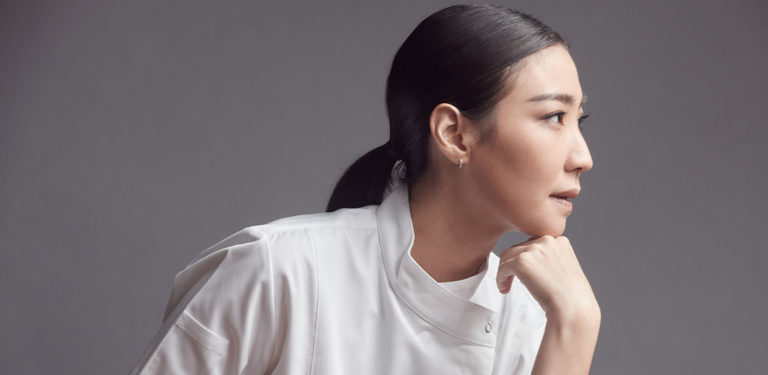In the dynamic landscape of global gastronomy, a new star has risen from Bangkok to claim one of the culinary world’s most prestigious titles. Pichaya “Pam” Soontornyanakij, the innovative force behind the acclaimed restaurant Potong, has been named The World’s Best Female Chef 2025, making history as the first Thai and Asian woman to receive this distinguished honor in the award’s 14-year history.

This remarkable achievement comes as part of the prestigious World’s 50 Best Restaurants Awards, with the final ceremony scheduled for June 19, 2025, at Lingotto Fiere in Turin, Italy. Her journey from journalism student to culinary pioneer represents not just personal triumph but a significant milestone for Asian cuisine on the global stage.
A Heritage of Healing Transformed into Culinary Art
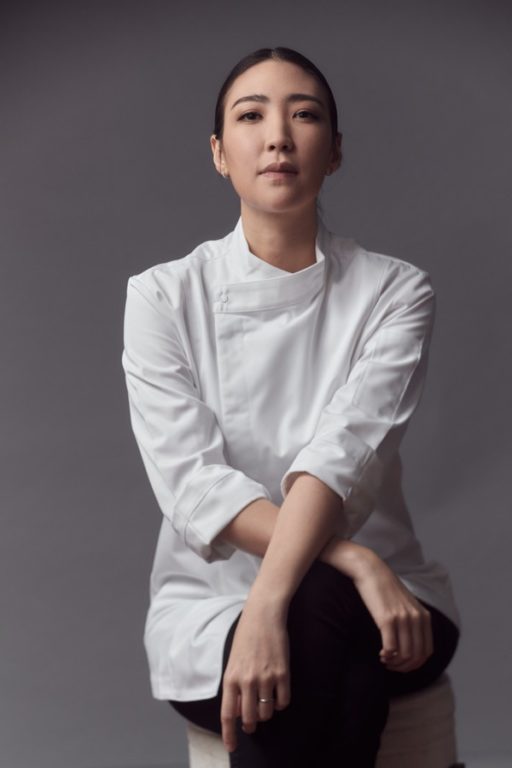
Born as Pichaya Utharntharm on July 15, 1989, in Bangkok, Chef Pam’s culinary destiny was perhaps written in the very walls that now house her celebrated restaurant. Her family’s roots trace back to the 1880s when her ancestors migrated to Thailand from Fujian in southern China. Born into a lineage of traditional medicinal herb producers spanning four generations, she grew up surrounded by the aromas and philosophies that would later influence her distinctive approach to cooking.
Raised in Bangkok, Pam attended Saint John’s International School before pursuing higher education at Chulalongkorn University, where she graduated in 2010 with a bachelor’s degree in communication arts. Initially setting her sights on journalism, fate had other plans for the young graduate. A pivotal turning point came when her natural talent for cooking steered her toward the culinary arts, a decision that would ultimately transform the landscape of Thai cuisine.
From Student to Star: The Making of a Culinary Virtuoso
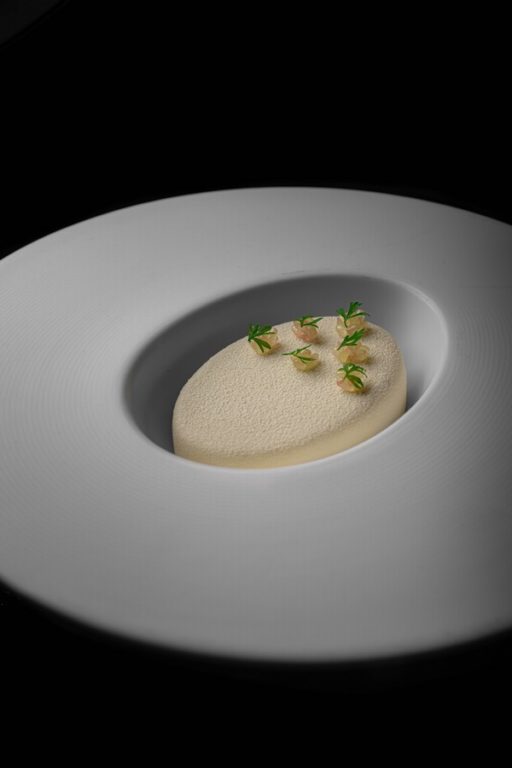
Chef Pam’s culinary journey accelerated rapidly when she became the youngest chef to win the 2011 Asia Youth Hope Cooking competition at just 21 years old. This early recognition catalyzed her decision to pursue formal culinary education at the prestigious Culinary Institute of America, from which she graduated in 2013.
Her formative professional years were spent in New York, where she trained under the renowned chef Jean-Georges Vongerichten for six years. This rigorous apprenticeship under one of the world’s most celebrated culinary masters honed her technical skills and expanded her creative vision, providing the foundation for the innovative cooking style she would later develop.
Upon returning to her homeland, Chef Pam established her first culinary venture, The Table, a restaurant and private dining experience that showcased her unique perspective on Thai cuisine. This initial foray into restaurant ownership gave her valuable experience in crafting distinctive dining experiences that would later become her hallmark.
Television Fame and Rising Recognition
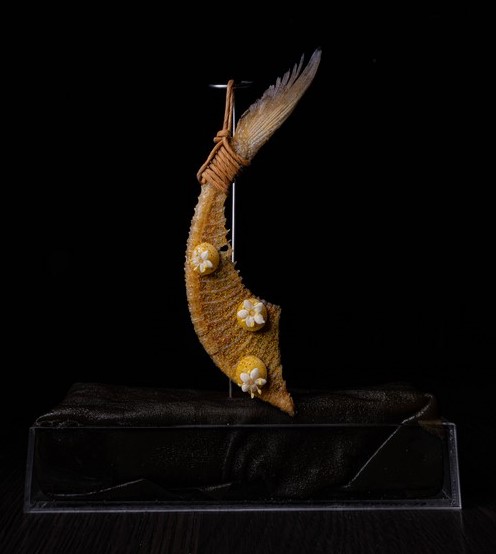
Beyond her restaurant endeavors, Chef Pam became a familiar face to Thai audiences through her work as a culinary consultant and regular appearances on Thai cooking shows. Her expertise and charismatic presence led to her becoming a judge on the popular television series Top Chef Thailand, further cementing her status as one of the country’s most recognizable culinary personalities.
Her trajectory continued its meteoric rise when she accomplished the unprecedented feat of becoming the first-ever and youngest female chef to simultaneously receive both a Michelin star and the Opening of the Year award from the Michelin Guide. These accolades were merely precursors to the international recognition that would follow.
Potong: A Culinary Homage to Heritage
The most compelling chapter of Chef Pam’s story began in 2019 when her family’s 120-year-old Chinese herbal pharmacy building in Bangkok’s vibrant Chinatown district became vacant. Seeing an opportunity to honor her heritage while creating something entirely new, she and her husband Boonpiti “Tor” Soontornyanakij embarked on an extensive renovation project to transform the five-story heritage building into a multi-dimensional culinary destination.

Potong, whose name translates roughly as “simple,” opened its doors in 2021. The restaurant quickly established itself as one of Bangkok’s most coveted dining experiences, earning its first Michelin Star in 2023. That same year, it achieved the remarkable distinction of being ranked as Asia’s 17th best restaurant and the world’s 57th by the prestigious 50 Best organization. By 2025, Potong had climbed to No.13 on Asia’s 50 Best Restaurants list, reflecting its growing influence and excellence.
A Culinary Philosophy of Balance and Memory
What sets Chef Pam’s cooking apart is her unwavering commitment to five culinary pillars: salt, acid, spice, texture, and the Maillard reaction. Through her 20-course tasting menu, diners embark on a sensory journey that tells the story of her unique Thai-Chinese heritage while pushing the boundaries of traditional cuisine.
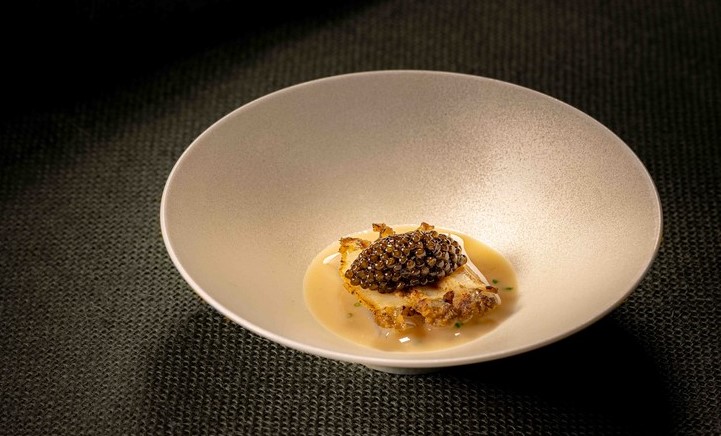
Each dish at Potong exemplifies her philosophy of intricate balance rather than complexity for its own sake. Her signature fragrant roast duck dish has become legendary among culinary enthusiasts. Another standout creation features Thai-Chinese duck leg where rich, moreish flavors are elevated by fiery Sichuan peppercorns and complemented by the silky texture of chawanmushi, a Japanese savory custard. The dining experience unfolds across different floors of the historic building, stimulating all five senses while creating lasting memories for guests.
Beyond Personal Success: Empowering Future Generations
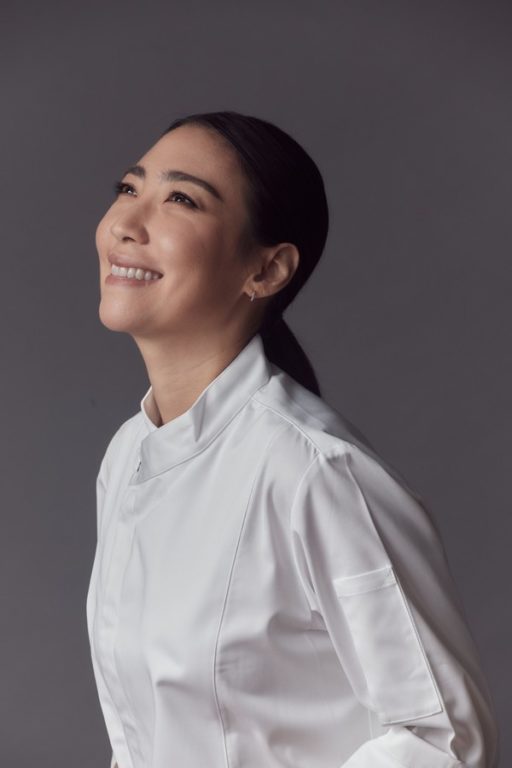
At just 35 years old, Chef Pam has already begun looking beyond her own achievements to nurture the next generation of female culinary talents. In 2024, she co-created the Women for Women scholarship, which awards a fully funded culinary internship at Potong to one young woman annually from an underprivileged, rural Thai background. This initiative demonstrates her commitment to creating pathways for other women to follow in her pioneering footsteps.
Chef Pam’s recognition as The World’s Best Female Chef 2025—selected by an academy of 1,120 culinary experts from around the world—represents not just personal achievement but a milestone for Asian cuisine on the global stage. As she prepares to accept this honor at the World’s 50 Best Restaurants Awards ceremony in Turin this June, she stands as a powerful symbol of how cultural heritage, technical excellence, and creative vision can converge to create truly transcendent culinary experiences.
The team at HOT Magazine recently had the distinct privilege of sitting down with the remarkable Chef Pam. In this exclusive interview, we delve into the inspirations, challenges, and triumphs that have shaped Chef Pam’s remarkable journey.
HM: Your journey from a journalism student to being crowned the World’s Best Female Chef 2025 is extraordinary. What inspired you to shift from storytelling with words to storytelling through food?
CP: Actually, I’ve never really seen it as a shift—I think I’ve always been a communicator, someone who feels and wants to express those feelings through experience. Cooking came naturally to me from a young age. I was never someone who just liked to write about something—I needed to do it, touch it, feel it.
I grew up cooking beside my mom. The kitchen was always my safe space, the place where emotions didn’t need to be spoken—they were tasted. I think I eventually realized that food could carry meaning in a way that even words couldn’t. The plate became my paper.
So yes, I was trained in journalism, but it was through food that I found the boldest, most vulnerable way to express who I am. From memory, from culture, from identity—it all came together in the kitchen.
HM: Potong and Opium Bar are steeped in your family’s heritage and history. Could you share how your ancestors’ legacy influenced the concepts and menus of these establishments?
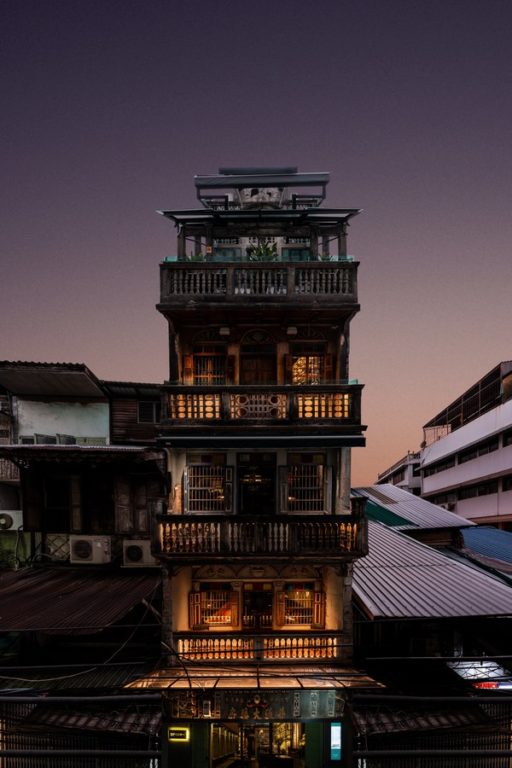
CP: Potong was never just a restaurant idea—it was born from a very personal moment. I visited the building with my grandfather, and as we walked through each floor, he told me stories about what each space once was—where the medicine was stored, how our family used the rooms, and what life used to feel like inside that pharmacy. There was something powerful about hearing those stories while standing in the exact places they happened. It made time feel layered, alive. I turned to my husband that same day and said, “Let’s turn this into a restaurant.”I didn’t want this place to become just another forgotten building in Chinatown—I wanted it to live on, to evolve while still respecting where it came from. That moment planted the seed for how Potong was built—not just physically, but conceptually. I wanted guests to walk through the building the way I did with my grandfather, to move through each floor and experience something meaningful.
That’s when I began developing my 5 Elements and 5 Senses philosophy. It was about creating a journey that touches more than just taste. Salt, Acid, Spice, Texture, and Maillard Reaction form the foundation of flavor. But I realized that what makes a dining experience truly unforgettable is how it engages the senses—the sound of footsteps on old wood, the smell of fermentation in a quiet corner, the feel of handcrafted ceramics, the flickering light, the emotional tension between memory and discovery.
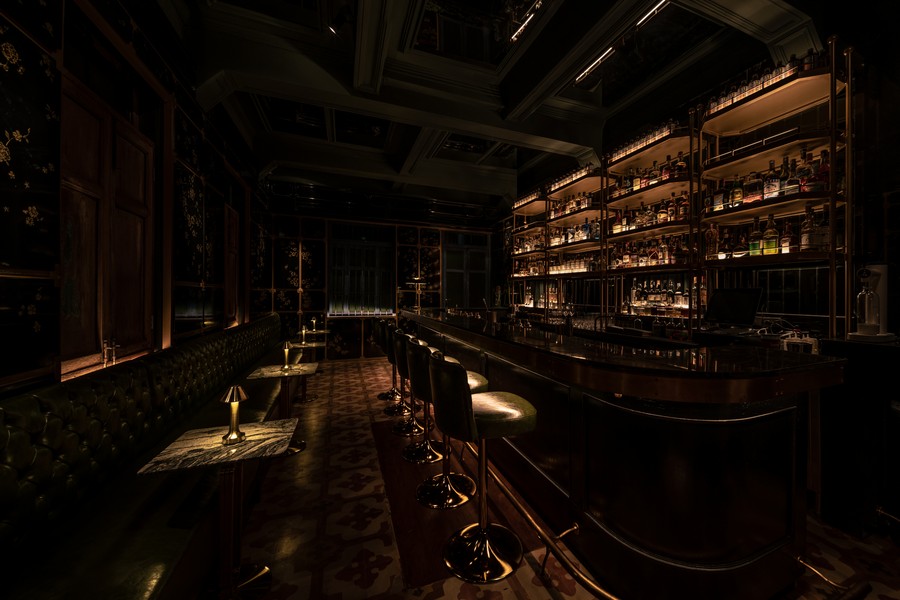
Even the name Opium Bar came from that day. On the fourth floor, I saw an old wooden bed in the middle of the room. I asked my grandfather about it, and he told me that his grand father used to lie there to smoke opium, so we decide to name this bar Opium Bar.
Everything we’ve done at Potong—every detail, every dish, every design choice—is rooted in that memory of walking through the building with him. It’s not just a restaurant. It’s an
experience layered in emotion, heritage, and transformation.
HM: Your philosophy of “5 elements” (Salt, Acid, Spice, Texture, Maillard Reaction) and “5
senses” (Sight, Sound, Smell, Taste, Touch) plays a central role in your cooking. How did you develop this framework, and how do you ensure it resonates with every dish you create?
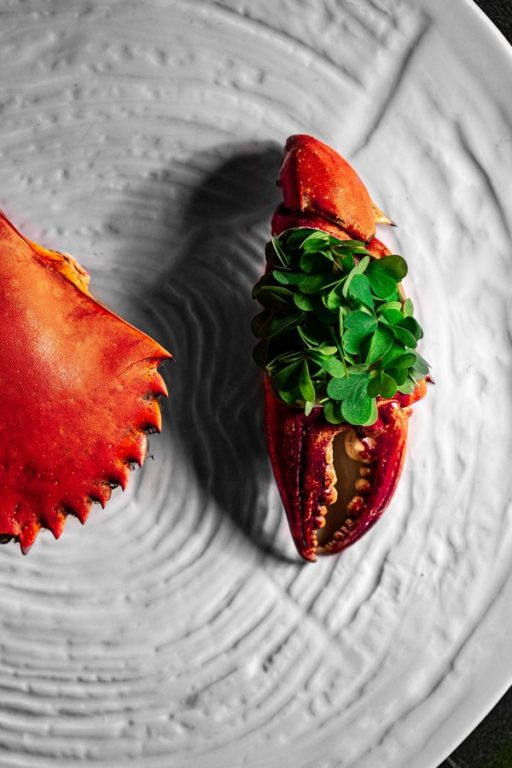
CP: The Five Elements and Five Senses didn’t come to me all at once—it was something that slowly formed over years of cooking, tasting, failing, and learning. I started to notice that the dishes I remembered most—the ones that stayed with me emotionally—always had a certain completeness to them. It wasn’t just about flavor or technique; there was a kind of harmony that triggered a deeper connection. That’s when I began breaking things down. What made a dish feel balanced? What made it powerful? Over time, I developed what I now call the Five Elements: Salt, Acid, Spice, Texture, and Maillard Reaction. These are the foundations of flavor in my kitchen—each one plays a specific role in evoking depth and emotion. Salt gives structure. Acid sharpens. Spice adds character. Texture gives life. And Maillard brings memory through the beauty of caramelization and fire.
But that alone wasn’t enough for me. When I started designing POTONG, I kept going back to the memory of walking through the building with my grandfather. I remembered how it wasn’t just what I saw or heard—it was what I felt. The way the wood sounded beneath my feet. The change in temperature from room to room. The way the air carried history. That’s when I understood that food—at least the kind I want to create—is never just about taste. It’s about how all Five Senses work together. Sight, Sound, Smell, Taste, and Touch—they aren’t just physical sensations; they’re emotional triggers. At POTONG, I apply both frameworks simultaneously. I build each dish around the Five Elements, but I design the entire experience through the Five Senses. That means thinking beyond the plate: how it looks, how it sounds when it’s served, how it feels in your hand, how the room smells at that moment.
It’s never about being fancy—it’s about being present. I want every dish to have emotional
weight. Whether it’s our 14-day dry-aged duck, which delivers contrast in both texture and
Maillard reaction, or our Pad Thai course, which uses Thai shrimp and simple “Thai” noodle to tell a story of national identity and resilience—every element and every sense is considered. This philosophy isn’t a template. It’s a language. And every dish we create is a sentence, spoken through that language.
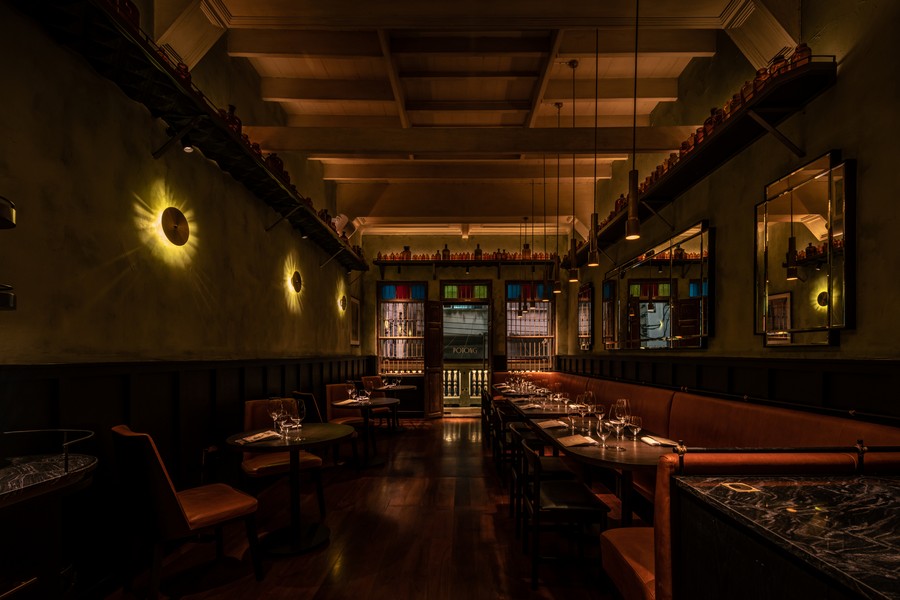
HM: Potong has become a global sensation for its progressive Thai-Chinese cuisine. How do you balance tradition with innovation when crafting your 20-course tasting menus?
CP: When we first opened POTONG, the tasting menu had around 20 individual courses. But over time, we refined the experience—not to reduce it, but to focus it. Right now, we don’t define it by a number of dishes anymore. If I had to count, there are probably 8 or 9 main moments, but many dishes come together as a pair or within the same presentation, so it’s more layered than just a count. That’s why we’ve moved away from numbering and simply call it our revolution Chef’s Tasting Menu.” It reflects a full-circle evolution of technique, memory, and experience.
Balancing tradition and innovation isn’t something I think about as two sides—it’s something I live every day. I was raised in a Thai-Chinese household, surrounded by flavors like soy sauce, star anise, Chinese pickled garlic, and fish sauce. Those are my roots. But I also trained at the Culinary Institute of America, worked at Jean-Georges when it was still three Michelin stars, and was exposed to the highest level of technique. I learned how to respect structure—and also how to break it when the moment calls for it.

So for me, the dishes at POTONG are built from both ends: emotional tradition and fearless precision. Like our signature duck—it’s dry-aged for 14 days, cooked exactly 13 minutes, rendered to crisp perfection with a fat-to-meat ratio that’s engineered through sourcing and process. It’s a dish born from heritage but executed through modern mastery.
Then there’s our POTONG’s Pad Thai, made with Nakhon Si Thammarat shrimp, served with our house-fermented sauce, and presented as an homage to one of Thailand’s most symbolic dishes—born out of wartime nationalism under General Plaek. We reinterpret its origin, not just to make it beautiful, but to remind people that Thai food has always been resilient, adaptive, and bold.
So yes, we innovate—but it’s always with respect. Always with roots. Tradition is not something I’m trying to escape. It’s something I’m trying to carry into the future, plate by plate.
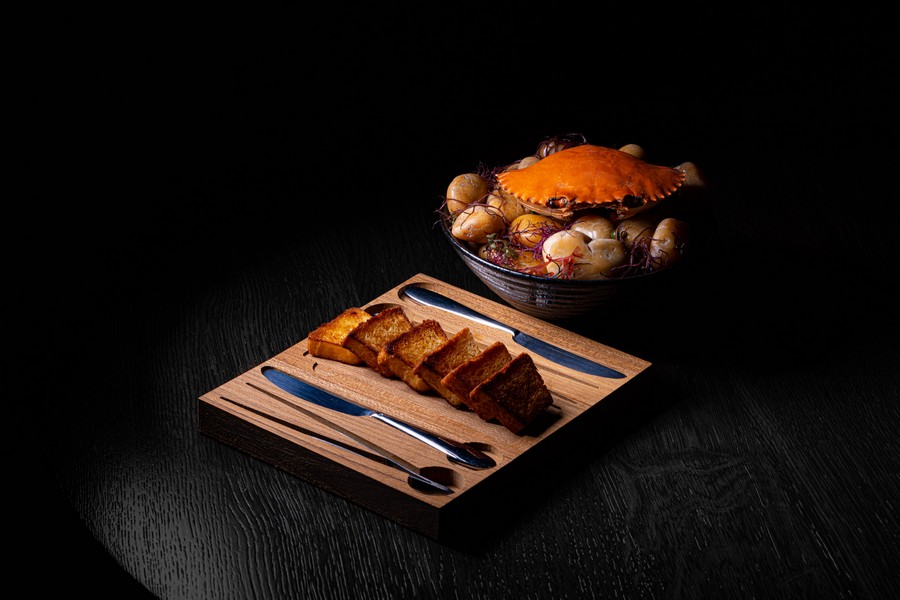
HM: Winning Michelin’s “Opening of the Year” award and receiving a Michelin Star for Potong must have been pivotal moments. What challenges did you face when redefining Thai-Chinese cuisine on such a prestigious platform?
CP: It was a huge honor to receive both the Michelin Star and Opening of the Year award in the same year. Awards are important—but to me, what they truly reflect is the amount of work, sacrifice, and belief that my entire team and I have poured into this journey together. I don’t see them as personal milestones. I see them as validation for the people who stood beside me from day one—through the chaos, through the unknown, through the process of building something that had never been done before.
One of the biggest challenges I faced personally was around that time—I had just given birth to my daughter, and while most people might have taken a pause, I was already right back into the middle of renovating POTONG. I was raising a newborn while leading one of the most intense creative and operational periods of my career. There were days I barely slept, splitting time between site meetings, tastings, and being a new mom. It was overwhelming. But it also reminded me of why I love this industry—because when you’re passionate about what you’re building, you find a way to make it work.
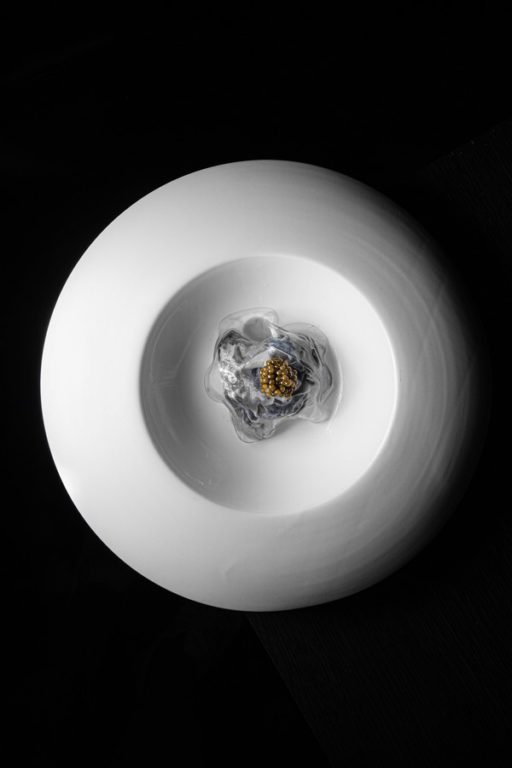
Creatively, redefining Thai-Chinese cuisine at the fine dining level was another massive challenge. Thai cuisine is often boxed in as street food—informal, fast, humble. Chinese cuisine, meanwhile, is so layered and deep, but still rarely acknowledged in modern progressive dining spaces. I wanted to change that perception, not by erasing the roots, but by elevating them. By using fine-dining technique to highlight ingredients like pickled garlic, fish sauce, and aged soy—not hide them. And by designing a tasting menu that blends those influences into something new, something that felt like me.
POTONG’s success wasn’t just about building a restaurant—it was about building a new way to see identity, heritage, and modernity together on the plate. And doing that while becoming a mother at the same time? That’s a journey I’ll never forget.
HM: Opium Bar is celebrated for its “Liquid Surreality” concept. How do you collaborate with your bar team to ensure the drinks align with the overall storytelling experience of the Potong building?
CP: At POTONG, our bar team doesn’t work in isolation—they’re part of a much larger creative collaboration that includes our chef team, especially when it comes to fermentation. Many of our ferments—like kombucha, honey ginseng infusions, and even soy sauce—are developed hand-in-hand between both teams. We test, refine, and build these elements together to ensure they align with the flavors, balance, and emotional rhythm of the tasting menu. Every detail matters, and every fermentation is created with a clear purpose in mind.
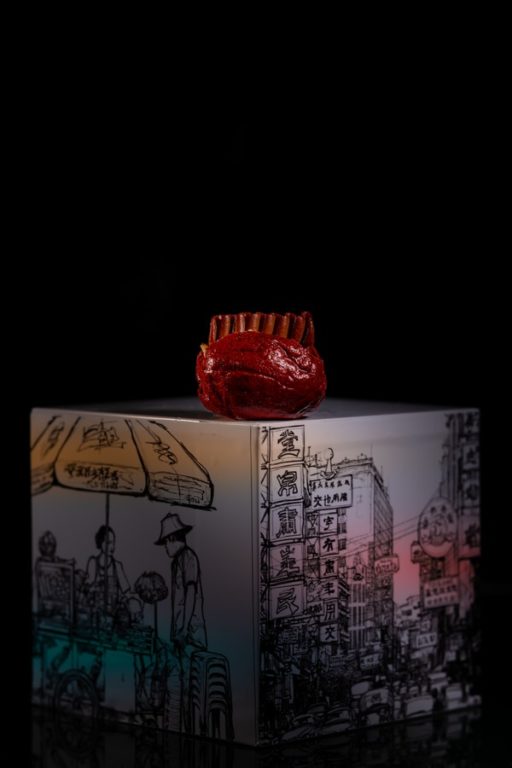
For our beverage pairing—both alcoholic and non-alcoholic—we’ve designed something that goes far beyond traditional wine pairings. With over 400 labels in our spirits and liquor library, we’re able to craft pairings that are not only complex and complementary but also deeply personal to each course. Sometimes we echo a flavor in the dish, sometimes we contrast it. But it’s always part of the same emotional arc we design for the entire menu.
So while the drinks are artistic and layered, they’re also grounded in history, process, and
collaboration. It’s never just about what’s in the glass—it’s about how it completes the
experience. Everything we do at POTONG, including the beverage program, is about pushing boundaries while holding onto something deeply personal and real.
HM: Your efforts to empower the next generation of female chefs through the Women-for-Women Scholarship are inspiring. What motivated you to start this initiative, and what impact do you hope to see in the culinary landscape in the coming years?
CP: Starting the Women-for-Women (WFW) Program—which includes both a scholarship and an internship track—was a very personal decision for me. I’ve never been the type to sit back and talk about change. I’d rather build something that makes it real. Throughout my career, I’ve seen how hard it can be for women in kitchens—not always because of direct discrimination, but
because of structural inequity. There’s a difference between inequality and inequity. It’s not just about being treated the same—it’s about having the tools, support, and access to succeed in the first place. That’s where WFW comes in.
I created this platform to give young female chefs in Thailand the opportunity to learn, to lead, and to see themselves represented. We provide hands-on mentorship, financial support, and a clear path for women to grow into leadership roles. I know what it’s like to stand in a kitchen and feel like you’re the only one—and I want to make sure the next generation doesn’t feel that way.
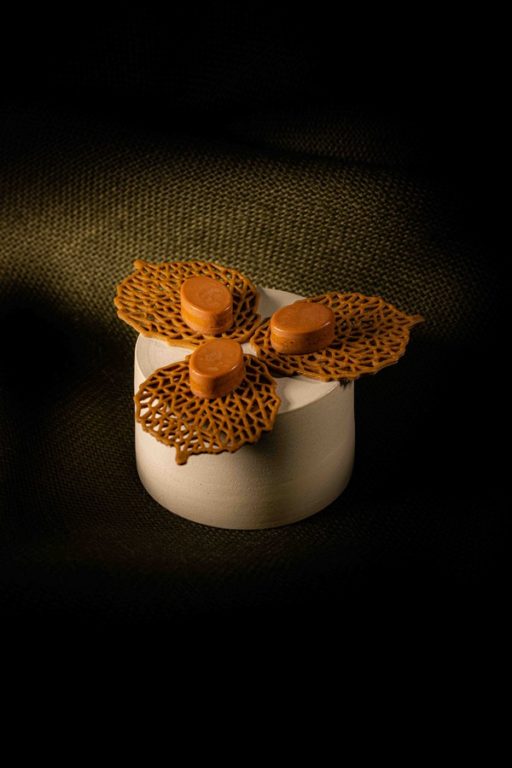
I remember being invited to speak at a Michelin internal event focused on gender equity, and it reminded me that the responsibility we carry as women in this industry isn’t just to do the work—it’s to open the doors for others. I’ve also been deeply encouraged by chefs likeDominique Crenn, not because I aspire to her journey, but because I saw a reflection of what I’ve been doing for years: building female-led kitchens, leading with emotion and discipline, and creating space without apology.
At the end of the day, I want the culinary landscape to shift—not just cosmetically, but
fundamentally. More women in leadership. More respect for emotional intelligence in kitchens. More support systems that let women be chefs, leaders, and mothers—all at once.
HM: Both Potong and Opium Bar have received countless accolades, from “Asia’s Best New Restaurant” to “Best Innovative Restaurant.” How do you and your team stay motivated to continually push boundaries and evolve?
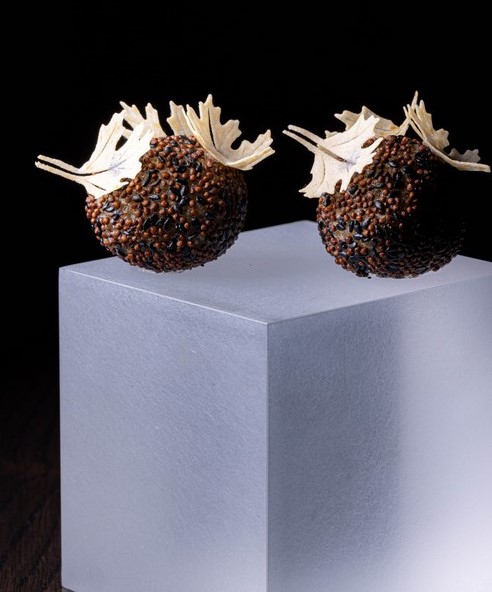
CP: We stay motivated because we’ve never chased awards—we chase purpose. From day one, I’ve told my team: we’re not here to replicate, we’re here to create. Every single person on this journey with me—whether at POTONG, Opium Bar, or across our The X Project hospitality group —understands that we’re building something that hasn’t been done before. And that comes with pressure, but also with freedom.
What keeps us going is the constant urge to refine. To dig deeper into techniques, to research forgotten ingredients, to explore new forms of expression. Our team is made up of what I call “leaders”—not just chefs or bartenders or service staff, but people who carry the responsibility of culture and execution with them every day. Some have been with me for more than five years.
Many have grown from interns into head chefs or managers. That evolution is what keeps our ecosystem alive. I also believe in reinventing from within. This year, we’re entering a major renovation phase at POTONG, not because we need to—but because we want to keep growing. New menu, new experience, deeper emotion. That’s the heart of it. We never settle. We never stop asking, what’s next?
HM: As a chef with Thai, Chinese, and Australian heritage, how do you incorporate personal memories and cultural influences into your menus? Could you share a particular dish that holds deep emotional significance for you?
CP: Everything I cook comes from memory. I always say: my food is not just Thai or Chinese or Western—it’s me. I was raised in a Thai-Chinese household in Bangkok. I trained in America. I spent years exploring my identity through food. So every dish on the POTONG menu is built on that balance—of root and reinterpretation.
One dish that holds deep emotional weight for me is our Yin Yang Noodle. It was inspired by a dish my mom used to cook when I was a child—rad na, a humble noodle dish with Chinese gravy and crispy and soft textures. That memory stayed with me for decades. At POTONG, I transformed it into a dual-texture noodle served with fermented pork broth—black and white, crunchy and soft. It’s not about nostalgia for the sake of sentimentality. It’s about honoring where I come from, while pushing that memory into a new form.
These dishes aren’t “fusion.” They’re memory, they’re identity, they’re everything I’ve lived
through—and everything I’m still discovering.
HM: Looking toward the future, what new culinary frontiers or creative ambitions do you hope to explore, either at Potong, Opium Bar, or beyond? Is there a dream project or collaboration you’ve yet to pursue?
CP: The future for me isn’t about building more—it’s about building better, with clarity and soul. That’s the spirit behind The X Project (https://thexprojectbkk.com/), which my husband and I started many years ago. From the beginning, our goal wasn’t just to open restaurants—it was to create spaces that expressed identity, challenged boundaries, and invited people into a deeper, more emotional experience through food and design.
Today, we’re a group of 10+ restaurants and bars, with a team of more than 150+ people.
There’s POTONG, of course, and Opium Bar, which lives upstairs. SMOKED, which now has four locations, is all about fire and the beauty of smoke in Thai & American BBQ. TORA Izakaya reflects a playful Japanese casual vibe, and La Copita follows right after—a bright, bold bar inspired by spice-forward spirits and vibrant energy.

Our recent opening, Khao Sarn Sek, is a space that lets me explore sacred Thai ingredients in a different format. It’s more casual in tone, but no less precise. The menu celebrates elements like rice, palm sugar, fish sauce, and coconut—reinterpreted through a progressive Thai lens. It’s a love letter to Thai food, and a space where I can be experimental, grounded, and connected to tradition all at once.
And next, we’re opening RA-U, a modern Thai grillhouse in Siam, on July 1st, 2025. This project is primal and expressive—built around Thai fire techniques, big flavor, and bold storytelling through the plate. It’s going to be raw in the best way possible, but still hold the same elegance and structure we’re known for.
We’re also working on a new concept in the pipeline called SATO, a Thai brewery project
focused on reimagining Thailand’s traditional rice-based fermented drink. I believe Thai
beverages deserve the same respect and global recognition as any fine spirit or sake. Through SATO, I want to show the world that our native drinking culture can be refined, elevated, and celebrated with pride.
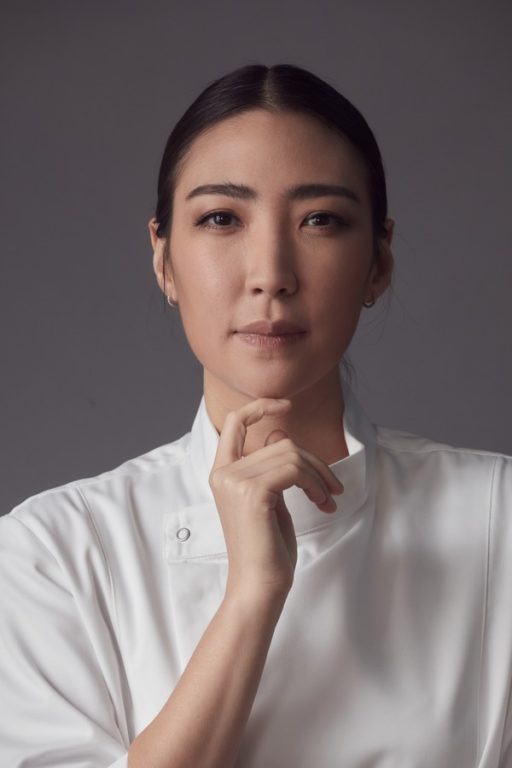
Honestly, I want to continue breaking rules while honoring my roots. I’m interested in more
cross-disciplinary projects—blending food with architecture, fashion, design, and emotion in unexpected ways. I also want to keep building opportunities for the next generation, especially through our Women-for-Women (WFW) platform. It’s not just about my journey anymore—it’s about the future of the industry we’re shaping together.
So what’s next? The truth is, we’re always evolving. As long as I have something to say through food—or drink—I’ll keep building. Not for the sake of expansion, but to share what I believe in: that Thai creativity, when rooted in truth and pushed with discipline, has no ceiling.
From a young journalism student to world-renowned chef, Chef Pam has crafted a career defined by breaking barriers and honoring traditions. Through Potong, she has created not just a restaurant but a living testament to her family’s legacy and her own innovative spirit—a delicious convergence of past and future that continues to captivate diners and inspire chefs around the world.


